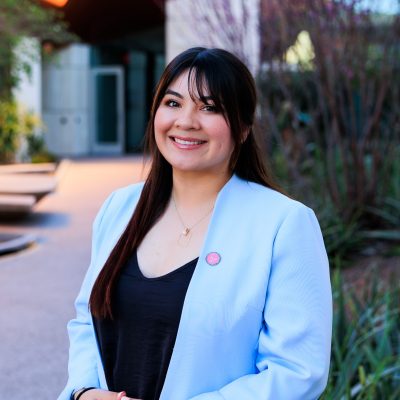Next Doors: The Importance of Being Present

Sometimes, simple things in life can cause a chain reaction. For instance, what happens if you’re a student and you don’t show up to school? Simple — you probably miss an assignment, which you can make up later.
But what happens if you’re a student and your particular circumstance results in you missing a lot of school? Say your family moves around because they don’t have the money to afford where they live. Someone is sick and needs a caregiver. Or any of a variety of other circumstances keeps you from going to class.
Naturally, you would fall behind. And it would be harder to catch up.
But if you are early in your academic career, not showing up for math or English makes it harder to complete later grades. Dropout rates are higher for kids who miss a lot of school. And when kids drop out, their path to a brighter future is compromised.
There’s a term for this — it’s called chronic absenteeism when, by educational standards, a student misses more than 10 percent of a school year, or about 18 school days. It’s one of the most telling indicators of whether a student is going to be successful and go on to college. And it tends to happen more in underserved communities where economic factors can derail educational pursuits.
“One of the emerging issues and priorities that jumped out from a data perspective is a growing and increasing percentage of students missing school, especially those who are chronically absent,” said Paul Luna, president and CEO of Helios Education Foundation, which works in Arizona and Florida with a focus on student completion of secondary education. “That absence from school becomes absence from learning, and absence of learning then starts to minimize the opportunity for those students to stay on an academic trajectory to ultimately be successful in high school and moving into some type of education beyond
high school.”
There are a couple of important things to keep in mind when talking about chronic absenteeism in Arizona. First, the COVID-19 pandemic had a massive effect on chronic absenteeism when schools were moved to online settings. And second, Arizona has one of the highest chronic absenteeism rates in the country. According to Read On Arizona, an educational nonprofit focused on improving early literacy, one in three Arizona students fell under this category in 2022, and some estimates are as high as 46 percent.
Dr. Paul Perrault, senior vice president of community impact and learning for Helios, said that chronic absenteeism has eaten away at some of the gains made in K-8 education, particularly in minority populations, as student attendance grew worse after schools reopened post-pandemic.
“Kids need to be in school to learn how to write well and read well and do mathematics problems with a teacher there,” he said. “We thought those numbers would get better as students get more used to going back to school, but in fact, recent data has shown the chronic absenteeism problem has gotten worse, particularly in Arizona.
Fortunately, a concerted effort to counter the increase in chronic absenteeism is underway in the form of a partnership between Helios, Valley of the Sun United Way, Attendance Works, Read On Arizona and several other groups that have created a task force on the subject.
They are working to identify and combat the sources of chronic absenteeism, with the goal of raising awareness of the issue and putting guard rails in place to keep attendance more consistent.
Some areas they are working on include educating parents and students about the importance of attendance, working with school districts to identify at-risk students earlier and provide them with support services, and training teachers and educators to identify the problems created by chronic absenteeism.
“If we come together as a community, we can go further and deeper and the message can be stronger,” said Dawn Gerundo, director of education and children for Valley of the Sun United Way. “We work with districts side by side to identify what’s working, what’s not working, what has been tried before, what are you going to try that’s different. Ultimately, the end game is that each of the school districts develop a year-round attendance plan.”
The work being done is in its early stages, and at the end of the day, success will be measured by attendance data. The real effect will be harder to measure, yet incredibly important — real success will be keeping kids on track to a brighter future. Lori Masseur, director of early learning for Read On Arizona, said school attendance directly impacts student achievement.
“All of us have to come together and work in concert and in tandem to support students,” she said. “It’s an all-hands-on-deck approach to addressing attendance, and we really want to do it from an engagement perspective, really elevating to families the importance of why their children should be in school on a consistent and regular basis.”
To learn more, visit helios.org.






